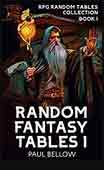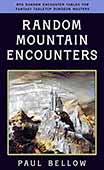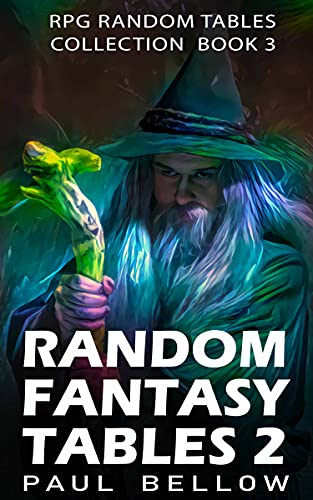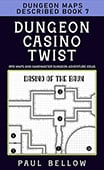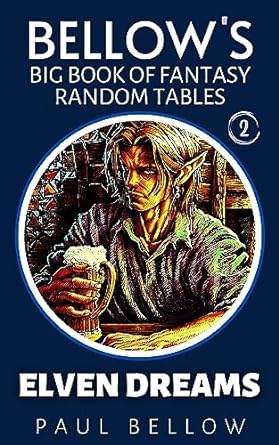When the May 2025 Unearthed Arcana dropped the Reanimator Artificer, shivers danced up the collective spine of the D&D community. Forget steampunk tinker gnomes spinning clockwork toys; this Artificer has bolts crackling and grim shapes twitching beneath greasy tarps. Imagine your workshop not as a metal shop, but a cross between Dr. Frankenstein’s attic and a storm-battered laboratory out on the moors. It’s here that the dead walk not just through forbidden magic, but through a fusion of arcane science and raw, mortal ambition.
The Reanimator blurs the boundary between life and death, science and sorcery. Where most Artificers dream in blueprints and runes, the Reanimator hears the electrical hum of necrotic energy, sees inspiration in stitched flesh and scavenged bone. This subclass does not tiptoe around the horror roots of reanimation—it leaps in with both muddy boots, embracing body horror and the deliciously uncertain ethics of “creating life” from what came before.
Most strikingly, the Reanimator marks a pivot for the Artificer, steering away from mechanical pets and explosive gadgets toward something more disturbingly organic. The subclass is loaded with horror-filmmaker DNA: flickering lightning, twitching limbs, the unsteady shuffle of an undead companion by your side. Every spell, feature, and table-turning gambit carries the weight of nightmarish science—raw potential electrified by necromantic brilliance.
So, is Reanimator a robust, balanced pet subclass that breathes new life into the Artificer’s toolkit? Or is it a flavor-forward experiment, dazzling with style but perhaps short-changed on mechanical rigor? Tonight, we grab our lab coats, steel our nerves, and dissect the design—patchwork and pulses and all. Check out our D&D artificer backstory generator too!
- Reanimator Spell List: Necromancy With a Spark
- Level 3 Features: Jolt to Life and Reanimated Companion
- Level 5 and 9 Upgrades: Customizable Fleshcraft
- Level 15 Capstone: Promethean Reanimation
- What Makes the Reanimator Different From Other Necromancers?
- Is the Reanimator Artificer Balanced?
- Fan Reactions and Playtest Reception
- Final Thoughts on the Reanimator Artificer
Reanimator Spell List: Necromancy With a Spark
One of the signature strengths of the Reanimator Artificer is its spell list—an inspired blend of necromancy’s chill and the white-hot jolt of the mad scientist’s lab. Instead of leaning into the mechanical or weapon-slinging side of baseline Artificers, the Reanimator opts for a spell progression humming with duality. The familiar necromantic staples—draining vitality, animating corpses—are now charged with kinetic, often Frankenstein-inspired, electricity.
Notably, the spell list distances itself from the standard fare of control or radiant-damage utilities. There are no smite-style standbys or shield-matrix reruns. Instead, you’ll find a thematic orchestra of raw necrotic spells and electricity-infused incantations, all reinforced by a few support tools to stitch the Reanimator’s unique combat rhythm. The spells aren’t about raw efficiency—they exist to deepen the subclass fantasy, forcing players to get creative, resourceful, and a little wild around the edges.
Try my AI Tabletop RPG generators...and an extensive library of content!
Survivors on the battlefield might witness your Artificer’s signature display: a blast of lightning fusing frayed nerves, or the flicker of false life animating a once-dead eye. This spell progression doesn’t just pay lip service to necromantic horror—it hardwires it into every combat round, every dark corner of the campaign.
| Level | Spell Name | Subclass Fantasy Rationale |
|---|---|---|
| 1 | False Life | Grants a simulation of life—faux vitality |
| 3 | Lightning Bolt | Classic “electric life” moment, mad science |
| 5 | Animate Dead | Commanding corpses, true necromancer flair |
| 7 | Blight | Harnessing necrotic energy for devastating effect |
| 9 | Raise Dead | Full resurrection: mastery over life and death |
The spell list accomplishes a rare feat: it weaves together science’s relentless curiosity with necromancy’s unsettling transgressions. With each slot expended, you feel the laboratory’s pulse, the hush before a corpse stirs, and the ceremonial drama of lightning calling dead flesh to order. For support-minded players, the protective and utility options allow for bold rescue plays and in-combat revivals—no longer is reanimation a behind-the-scenes trick.
Tactically, these spell choices force adversaries and allies alike to rethink the Reanimator’s role. Whether it’s turning a fallen friend into a lightning-charged sentinel or dismantling foes with necrotic torrents, the subclass proves to be more than a twist on existing archetypes—it establishes its own identity and gameplay rhythm.
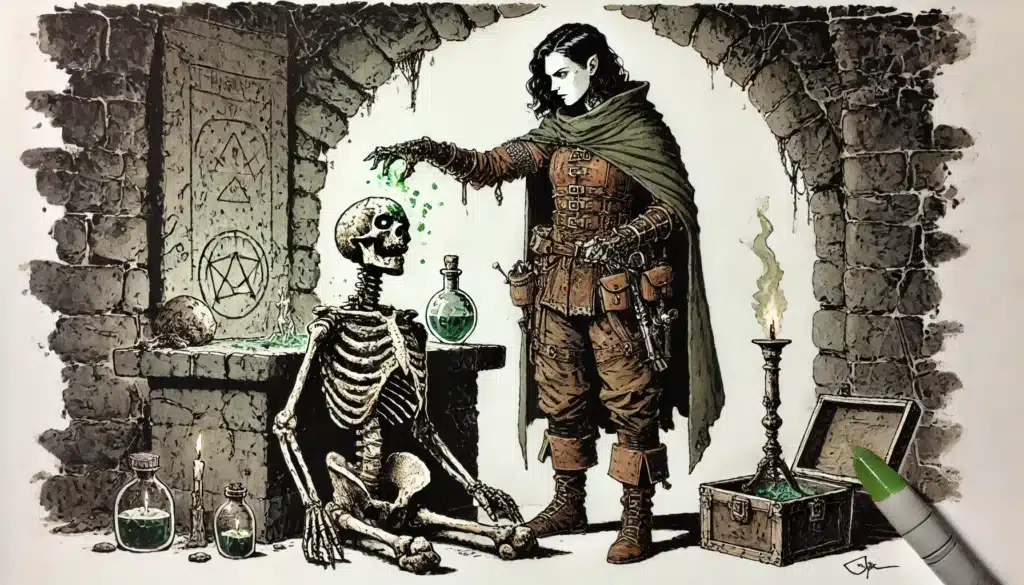
Level 3 Features: Jolt to Life and Reanimated Companion
From the instant you hit level 3, the Reanimator makes its horror credentials known. “Jolt to Life” turns a humdrum cantrip—Spare the Dying—into a pulse-pounding, battlefield-swinging maneuver. Gone are the days of gently closing a friend’s wounds; now, you unleash an AOE arc that heals allies and zaps the dying back to their feet, often with a literal surge of lightning. It’s a dramatic moment: a fallen ally spasms, a nearby foe is jolted back, and the battlefield ripples with mad energy.
⚔️ Fantasy RPG Random Tables Books
Make life as a Gamemaster easier…
If you play Dungeons & Dragons, Pathfinder, or other fantasy RPGs, this
RPG random tables series
is packed with encounters, NPCs, treasure, and more. Available in eBook or print—either way, you’ll have a wealth of adventure ideas at your fingertips.
Then there’s your Reanimated Companion—the Reanimator’s peculiar mirror to the Steel Defender or the Ranger’s pet. This stitched-together horror straddles the line between undead servant and bespoke construct. Its kit offers more than just raw damage; it can block corridors, act as a mobile conduit for your spells, or even detonate itself in a final, necrotic-flavored spasm. This is not a mindless minion, but a gristly tool of invention, experiment, and battlefield tactician’s delight.
Early play quickly reveals that the Companion is at the heart of your arsenal. It’s a multi-purpose instrument: a front-line shield and an explosive threat, a sensor platform and a morale-sapper. Its death is rarely permanent, meaning you’re encouraged to use it creatively—and with a little bit of delicious recklessness.
Reanimated Companion Use Cases:
- Absorb key hits with necrotic and lightning resistances
- Scout narrow halls or suspicious terrain ahead
- Block enemy escape routes or line of sight
- Trigger opportunity denial by threatening key squares
- Deal necrotic splash with its Death Burst on demise
- Carry torches, keys, or other fragile items into danger
- Serve as the anchor for chain-lightning spell effects
- Provide flanking benefits for allies
- Activate traps or pressure plates from a safe distance
- Draw aggro from monsters with a horror-based appearance
- Soak AOE spells or breath weapons in place of squishier party members
These features combine to give the Reanimator a feeling of constant agency. You’re never just along for the ride; every round brings tactical questions and opportunities to flex your creative muscles. That flexibility turns even smaller skirmishes into living (or undead) puzzles—a quality tabletop veterans will find deeply satisfying.
The early access to both battlefield healing and a multi-faceted pet sets the Reanimator apart from almost every other Artificer option. There’s a learning curve to harnessing both well, but the tactical spectrum is delightfully broad, rewarding planning and improvisation alike.
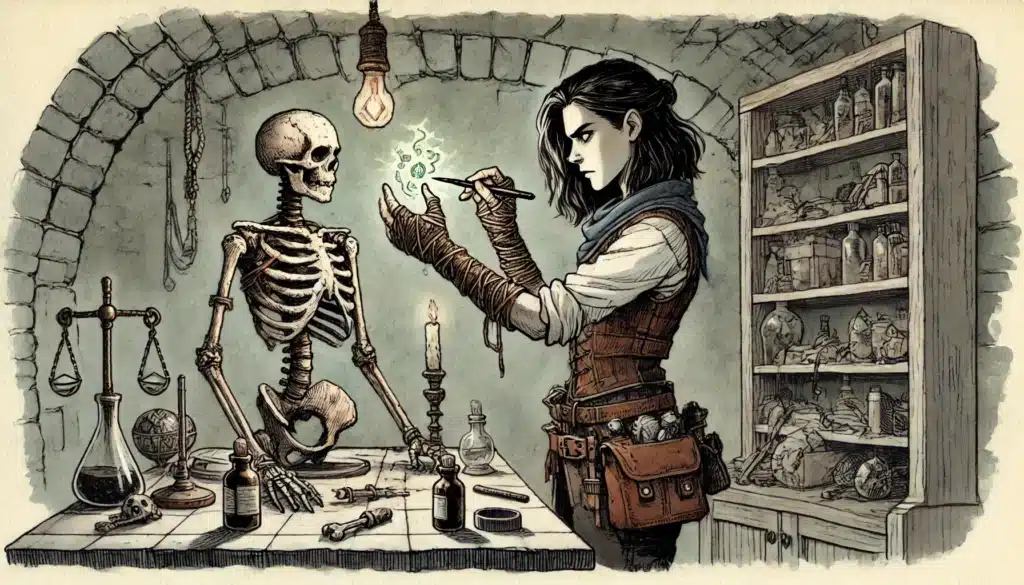
Full Stat Block Breakdown: Reanimated Companion
The stat block for the Reanimated Companion is a case study in careful design. Its lightning immunity and necrotic resistance allow for confident deployment in the wizard’s AOE or when baiting certain magical threats. Tactically, the Death Burst provides not just a last-gasp sting, but a way to control enemy movement—it’s rarely optimal for a foe to cluster on your companion when death might mean a necrotic explosion.
The Dreadful Swipe adds another layer, threatening enemy morale by imposing the frightened condition and sometimes sapping damage. In the hands of a strategist, this becomes a powerful crowd-control mechanism—one part fearmonger, one part stalwart tank. The senses and customizable attacks scale fluidly, ensuring relevance even as the party leaps through tiers.
While its HP and baseline AC could frighten cautious players (especially at higher levels), the modular upgrades help keep it on par with other pet classes. Because you’re expected to recycle it, rebuild it, and adapt its role, it never feels like a fragile liability—just a uniquely expendable asset.
| Trait | Stat Formula or Ability | Tactical Implication | Notes |
|---|---|---|---|
| HP Scaling | Proficiently scales with Artificer level | Stays relevant as party grows | Not the “unkillable tank” |
| Resistances | Lightning immunity, necrotic resistance | Baiting AOE, disables, or spell damage | Enables synergy with spell list |
| Senses | Darkvision, perception scaling | Scouts ahead—outclasses mundane pets | Excellent for dungeons |
| Attacks | Dreadful Swipe (possible frightened) | Crowd control or damage threat | Encourages positioning |
| Effects | Death Burst (necrotic AOE on death) | Denies area, finishes off weakened foes | Combo potential with Life Transfer |
| Reactions | Opportunity attacks, potential for variants | Board control and denial | Not just a passive bodyguard |
When compared to Beast Master Rangers or standard Steel Defenders, the Reanimated Companion lands in a fascinating liminal space. It isn’t built for brute-force tanking, nor is it a pure damage-dealer. Instead, it’s a “trickster pet”—an enabler for synergies and tactical puzzles, capable of being rebuilt or sacrificed without derailing the subclass. In groups hungry for battlefield control, it’s a revelation; for those wanting raw, relentless offense, it might feel a step slow, but new upgrades and spells keep the kit fresh at every tier.
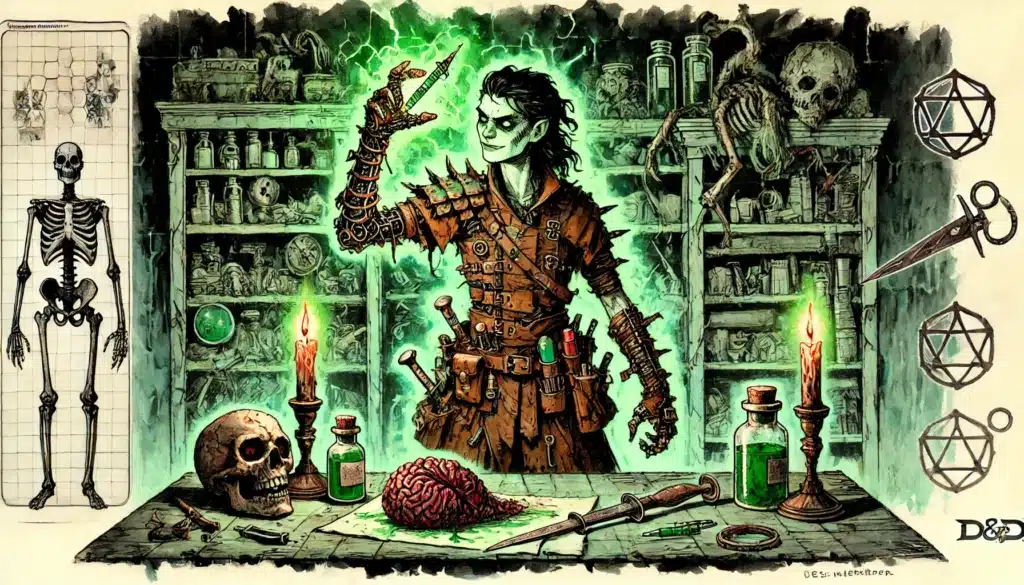
Level 5 and 9 Upgrades: Customizable Fleshcraft
At 5th and 9th levels, the Reanimator receives two milestone upgrades: Strange Modifications and Improved Reanimation. Here the subclass solidifies its “mad scientist” identity—each modification, a statement of creative intent and horror-bound artistry. No two Reanimator pets should look or fight the same, reflecting the warped vision of their creators.
These features also unlock mechanical expression. Want your companion topped with arc cannons that zap back at spellcasters? Prefer Mendelian genetics made manifest as acid-soaked claws and climbing talons? The menu is not just mechanically satisfying, but deliriously flavorful. You’re now choosing not just how your companion looks, but how it bends the tactical landscape.
The best part: these upgrades are meant for player agency. The experimental, sometimes comedic, sometimes grotesque builds practically beg for roleplay. Choose between improved lightning burst, faster movement, extra limbs, higher resistances, or more outlandish enhancements—the modularity feels like crafting an abomination one limb (or spell interaction) at a time.
⚔️ Fantasy RPG Random Tables Books
Make life as a Gamemaster easier…
If you play Dungeons & Dragons, Pathfinder, or other fantasy RPGs, this
RPG random tables series
is packed with encounters, NPCs, treasure, and more. Available in eBook or print—either way, you’ll have a wealth of adventure ideas at your fingertips.
Custom Combos:
- Gaunt, spindly companion with electrical nodes for bonus lightning spell damage
- Acid-dripping jaws that retaliate with damage on a missed attack
- Stealth-adapted corpse with padded paws and improved darkvision
- Climbing horror with spider legs for surprise attacks from the ceiling
- Thunder-glanded maw that triggers a 15-foot area knockback on death
- Exoskeletal plating for extra AC and resistance to bludgeoning
- Rotting, gas-laden body that poisons enemies in a 10-foot cloud upon demise
- Hulking brute with grappling appendages for restraining targets
- Rebuilt owl-like form for silent scouting and magical mark delivery
- Multi-headed pet with advantage on perception and resistance to charm
- Electrified spike tail—AOE reaction when struck with a melee attack
- Regenerative tissue for mid-combat healing (at the cost of spell slots)
This level of customization is what fantasy pet classes dream of. Even if every combo isn’t hyper-optimized (some options will always be shinier than others), the creative latitude is unparalleled. In campaign worlds that lean into the weird, the odd, and the barely-containable, the Reanimator shines.
The upgrades also serve as roleplay fuel—how does your gnarly knitting of sinew and bone change with each experimentation? What does your mentor say about inventing the first flying undead squirrel? Not every build will bamboozle min-maxers, but for DMs and players seeking memorable moments, the flavor far outpaces the mechanical blemishes.
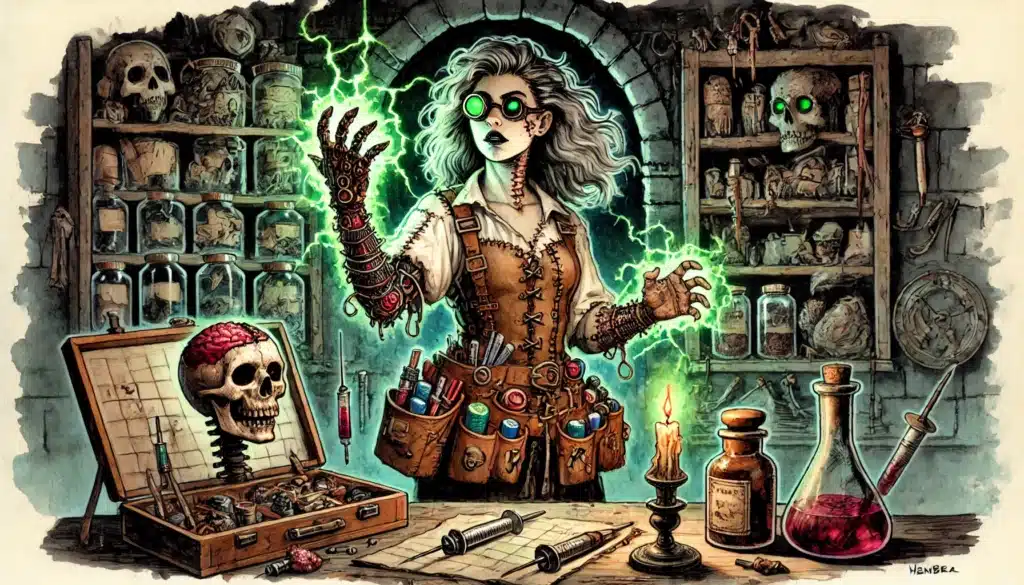
Level 15 Capstone: Promethean Reanimation
At the twilight of the adventuring life, the Reanimator Artificer unlocks the full symphony of lightning and death. The level 15 features deliver a capstone that is less about spectacle and more about confident mastery. Facilitated Revival lets you use your lab-grown guile to perform powerful resurrection rituals with reduced cost and effort—a triumph of inventiveness and macabre gratitude.
Improved Companion means your pet is truly an apex horror—its stat block surges, it evolves new resistances or attacks, and becomes immune to many crowd-control effects. It’s no longer a mere tool, but a set piece on the battlefield: unyielding, unpredictable, and only growing stronger as its creator meddles with the very essence of life.
Life Transfer is perhaps the showstopper—a macabre synergy that allows you to heal yourself or allies by sacrificing your companion, using its Death Burst in a grand finale. Tactical players will see endless combos here: is the disposable pet a healing battery, a last-move bomb, or a way to cheat death one more time?
Life Transfer Tactics:
- Sacrifice companion for instant self-heal after diving into the enemy line
- Heal a fallen ally by detonating the pet adjacent to both of you
- Position companion at choke point, pop Life Transfer, Death Burst devastates clustered foes
- Use low-HP companion as a bomb to bait enemies into grouping
- Combo with AoE debuffs: frightened, knocked prone, and then Death Burst
- Emergency heal the tank before a dragon’s breath sweeps the party
- Revive companion as soon as possible for a double-tap Death Burst on key targets
- Chain Death Burst with necrotic vulnerability debuff
- Use Life Transfer to “fake out” enemies expecting a simple attack—they focus the wrong target
- Convert otherwise wasted spell slots into battlefield presence and surprise healing
This capstone is not about fireworks or instant victory. Instead, it’s a tightly-woven set of systems that lets practiced Reanimators orchestrate layered plans. The synergy between resurrection, pet evolution, and self/ally healing turns every encounter into a stage for necromantic experimentation—an ending befitting the subclass’s unsettling climb to power.
While some will wish for a more bombastic finale, the Reanimator’s endgame is all about consistency, resilience, and the feeling of having finally “perfected” the imperfect science of bringing the dead to heel.
What Makes the Reanimator Different From Other Necromancers?
D&D’s character creation is littered with necromancers—the bookish Wizard, the shadowed Warlock, the pious Grave Cleric. The Reanimator stands apart by refusing to fit neatly into the spell-slinging, pet-multiplying, or deity-pleasing molds. Where the undead armies of a classic Necromancer march in chilling unison, the Reanimator’s singular pet shambles, clatters, and bolts, a testament to both hubris and invention.
Try my AI Tabletop RPG generators...and an extensive library of content!
Undead Warlocks entwine with fiends and eldritch patrons; Reanimators wrangle the body itself—dead tissue, lightning, and willpower stitched together. Grave Clerics tiptoe on holy ground, judging life and death; Reanimators operate as unlicensed surgeons, inventors on the bleeding edge of what is “proper.” They don’t command minions in droves, they build. They do not channel through spirits, but through wires and wild science.
Aesthetically and mechanically, the Reanimator is the genre’s answer to those who love the morbid medical, the haunted laboratory, the thrill of “it’s alive!” moments. Their magic is of the moment—powerful, risky, and deeply personal.
Comparison Points:
- Solo construct vs. “true undead” minion swarms (Necromancer Wizard)
- Mad science, sewn horrors vs. gothic shadow or pious death
- Body horror, patchwork pets vs. clean, spectral designs (Grave Cleric)
- Reliance on pet durability over mass command spells
- Lightning, acid, and customization motifs vs. curse or channel divinity
- Flexible combat utility via upgrades, rather than rote minion actions
- Less spell slot competition—focuses on a narrower necromantic toolkit
- Strong thematic roleplay hooks for laboratory, experiment, or taboo-breaking play
- Consistent pet presence vs. summon-and-forget spells (e.g., Animate Dead)
- Functionally a pet class first, necromancer second—unique identity workspace
- Encourages sacrifice and risk over pure safety or control
The result? The Reanimator fills a space almost untouched in official D&D—a horror-tinged, Frankensteinian pet class, granting players both battlefield flexibility and a laboratory full of narrative hooks.
It won’t replace the minion-mancy of Wizards or the cryptic power of Warlocks, but for those who want their “necromancer” play to feel deliberately, vividly different, it scratches an itch that had been begging for a talented hand.
Is the Reanimator Artificer Balanced?
Balance is the great specter haunting every subclass reveal—and the Reanimator is no exception. The biggest questions circle action economy and pet survivability: Does the companion eat up too many actions? Is its death too frequent to be useful? Does it synergize with the core Artificer spell arsenal, or clog up crucial slots and reactions?
Early tiers feel strong—particularly when leveraging the companion’s resistances and battlefield denial. The unique approach to healing and control sits comfortably alongside base Artificer features, without outclassing Steel Defender or stepping too heavily on Ranger toes. Spell limitations do pinch, but the subclass’s narrower focus keeps it from overwhelming the table with easy combos.
Middle and late tiers expose a different tension: can the companion keep up? Is the death/revive loop flavorful but ultimately punishing? Some tables will find the need to regularly rebuild or revive the pet just the right mix of thematic and challenging—others may want small buffs to its staying power or more clarity on casting while commanding.
| Tier (Levels) | Power Level | Support Value | Pet Durability | Synergy With Artificer |
|---|---|---|---|---|
| 3–5 | Solid, flexible | High (heal/zap) | Robust early-on | Strong, little overlap |
| 6–10 | Good, tactical | Growing options | Needs upgrades | Mixes well, a few gaps |
| 11–14 | Situational | Niche but strong | May lag vs. AoE | Slight spell crunch |
| 15–20 | Consistent, safe | Late-game combos | Decent (capstone) | Fully online, feels “whole” |
At the end of the day, the Reanimator is closer to balanced than not—certainly no more unsteady than Ranger Beast Mastery or Bladesinging Wizards. However, DMs may want to keep an eye on damage scaling and companion HP at high CR, and experiments with resource economy (actions, spell slots, healing) should be encouraged throughout playtests.
Overall, this is a toolkit that rewards investment and inventiveness—offering plenty of levers for DMs and players to tweak, rather than setting up obvious “traps” or abuse combos outright.
Fan Reactions and Playtest Reception
The D&D community is nothing if not opinionated and imaginative, and early feedback on the Reanimator Artificer has been electric (pun wholly intended). Reddit and Discord lit up with praise for its horror aesthetic, bold thematic direction, and sheer roleplay potential. Many have delighted in the chance to finally channel classic mad scientist tropes—abominations, lightning, questionable ethics—without homebrewing a lopsided necromancer Gadgeteer.
However, critique was not far behind. Some players flagged concerns about pet survivability in high-threat environments, especially compared to the sturdy Steel Defender or even the nimble Ranger’s beast. Others raised eyebrows at similarities to popular homebrew subclasses, worrying about overlap or muddying of “necromancer” boundaries.
A few worried that its spell selection is too niche, and that the breadth of companion builds might make certain choices a bit “trap-heavy” for less system-savvy players. But the prevailing mood was curiosity and excitement: D&D, after all, is a game about experimentation—and the Reanimator practically shouts for it.
Community Buzz:
- “I finally get to yell ‘It’s alive!’ and have mechanical weight behind it. Chef’s kiss.”
- “A pet class that’s more Frankenstein than fairy tale? Take my spell slots.”
- “Are the capstone features too subtle? I worry about falling off in late game.”
- “The horror roleplay options are endless—my DM’s prepping a whole ‘silent village’ arc.”
- “Can’t wait to mash up acid blood, lightning rods, and stealth limbs!”
- “Needs a little more explicit table support for companion resurrection.”
- “Feels closer to homebrew than WotC’s usual—wonder if they’ll pull back the body horror.”
- “I love the idea, but making the pet a ‘suicide bomb’ every fight seems a little wasteful.”
- “Reminds me of Ghostbusters’ gear: build-a-buddy, not build-an-army.”
- “Spell selection is chef’s kiss, but wish it had one more crowd control tool.”
- “Would love clarification on whether Reanimator pets can wear hats. For science!”
The guideposts from the community are clear: the Reanimator is a breath of fresh air (or grave dust), but needs table testing to truly settle its spot in the pantheon. Wizards of the Coast encourages players to try every weird combo and edge case—feedback now will shape the eventual Eberron release.
The more data and wild play stories flowing in, the more complete this horror-tinged subclass will become. If you’re on the fence, jump in—your lab might be the birthplace of the next must-have D&D innovation.
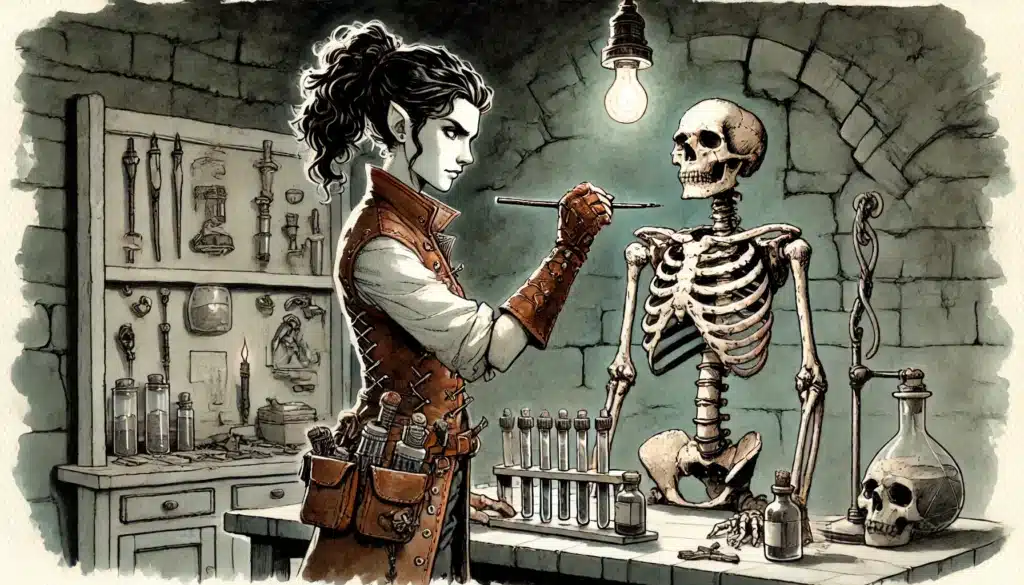
Final Thoughts on the Reanimator Artificer
The Reanimator Artificer stands as a testament to just how far official D&D design has come in marrying story and mechanics. It’s wildly evocative, weaving together necromantic dread, scientific hubris, and the thrill of forbidden experimentation. For campaigns thirsty for something stranger—from gothic noir cityscapes to rain-soaked, haunted highlands—the subclass fits like a stitched glove around a cold, pulsing heart.
⚔️ Fantasy RPG Random Tables Books
Make life as a Gamemaster easier…
If you play Dungeons & Dragons, Pathfinder, or other fantasy RPGs, this
RPG random tables series
is packed with encounters, NPCs, treasure, and more. Available in eBook or print—either way, you’ll have a wealth of adventure ideas at your fingertips.
It doesn’t try to outgun the necromancer wizard or outshine the old-school Beast Master. Instead, it builds its own laboratory: a pet class that leans into horror, not heroics, into risk, not rote safety. Each upgrade, each Death Burst, each “jolt to life” moment feels like a victory seized from the jaws of the unknowable. If you find yourself bored of mechanical repetition, the Reanimator opens up worlds of imaginative play, making every modification a brushstroke in your grotesque, singular masterpiece.
Some will balk at the visuals. Not every campaign will want a stitched-together corpse dog chewing on the leg of a lich. The subclass isn’t built for every table, and it gleefully leans into disquieting themes—perfect for Eberron, Ravenloft, or any world where the boundary between life and death is as thin as surgical gauze. But for those who savor the macabre, who want it weird, who want their D&D with a spark and a shiver—there’s never been a better subclass invitation.
Creativity is the watchword here. The Reanimator is for the builder, the dreamer, the roleplayer who wants each session to feel dangerous and new. If you see reanimation not as an end but a question—“What strange thing can I make of what’s left behind?”—you’re in exactly the right territory.
So as the Unearthed Arcana playtest evolves, and as the subclass edges closer to its final form, take this as a call to action: seize your lab coat, scribble fresh plans, and give the Reanimator Artificer a whirl at your table. You may just find yourself at the heart of D&D’s next great mad experiment—and loving every spark, stitch, and surge along the way.


